In 2016, one person every second was forced to flee their home. Most of the disaster-related displacements recorded in 2016 were linked to weather hazards like floods, storms, wildfires and severe winter conditions. These displacements will continue unless funding and political attention is directed to the underlying drivers: poverty and global climate change. We need to put internal displacement back on the global agenda.
or one person forced to flee every second
☛ Data source: Internal Displacement Monitoring Centre (IDMC)
Internal displacement is a crisis of enormous proportions that the world has effectively sidelined- which is a short-sighted failure that highlights a lack of solidarity and empathy, but also impacts the way we are responding to the global refugee crisis
☛ Data source: Internal Displacement Monitoring Centre (IDMC) and the Norwegian Refugee Council (NRC)
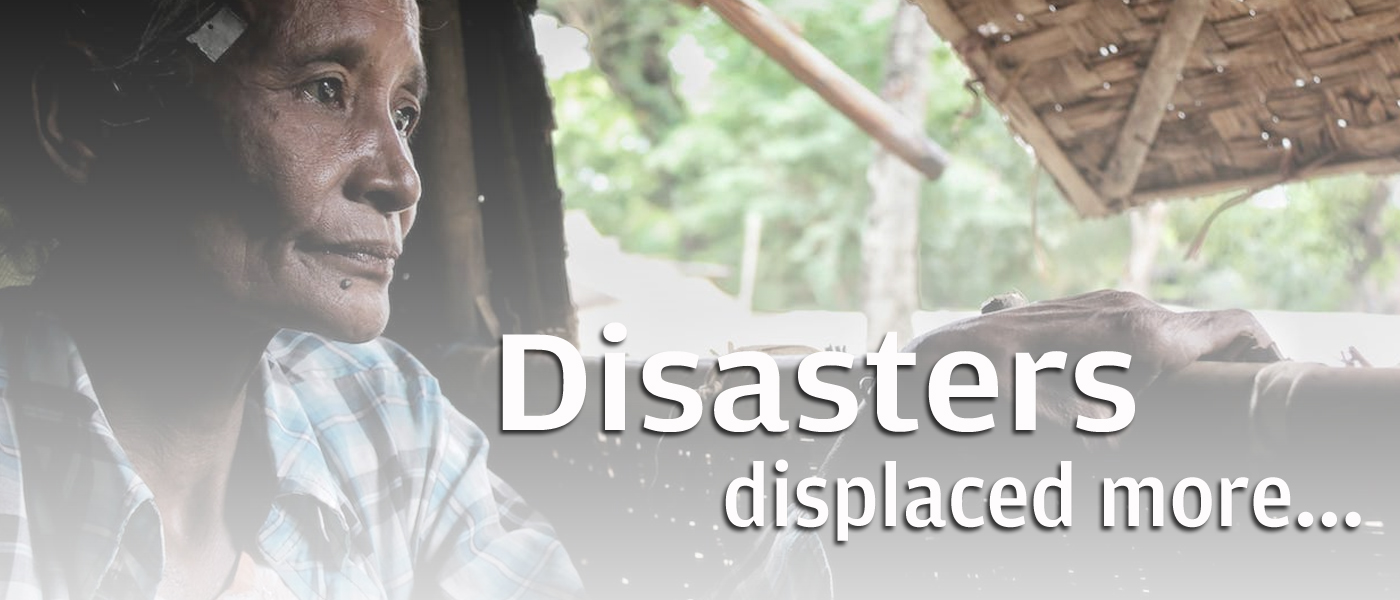
In 2016, 24.2 million new displacements were recorded due to disasters like floods, storms and wildfires. It is more than three times the number of people displaced by conflict. Floods accounted for half of all people displaced by disasters.
Disasters such as floods, storms and wildfires had an even greater effect, displacing 24.2 million people, more than three times the number uprooted by conflict. This trend was at its most acute in east Asia and the Pacific. In China, 7.4 million were forced from their homes, with 5.9 million affected in the Philippines and a further 2.4 million in India. Floods accounted for half of all people displaced by disasters.
☛ Data source: Internal Displacement Monitoring Centre (IDMC) and the Norwegian Refugee Council (NRC)
☛ Data source: Internal Displacement Monitoring Centre (IDMC) and the Norwegian Refugee Council (NRC)
South and East Asia were the most affected
While China, India and the Philippines have the highest absolute numbers, small island states suffer disproportionately if population size is taken into account. In China, 7.4 million were forced from their homes, with 5.9 million affected in the Philippines and 2.4 million in India.
☛ Data source: Internal Displacement Monitoring Centre (IDMC) and the Norwegian Refugee Council (NRC)
 Did you know? Once again, weather-related hazards, in particular floods, were responsible for the majority of all new disaster displacements in 2016
Did you know? Once again, weather-related hazards, in particular floods, were responsible for the majority of all new disaster displacements in 2016
☛ Data source: Internal Displacement Monitoring Centre (IDMC) and the Norwegian Refugee Council (NRC)
The majority of new displacements in 2016 took place in high-risk
environments characterised by low coping capacity, high levels of socio-economic vulnerability, and high exposure to natural and human made hazards
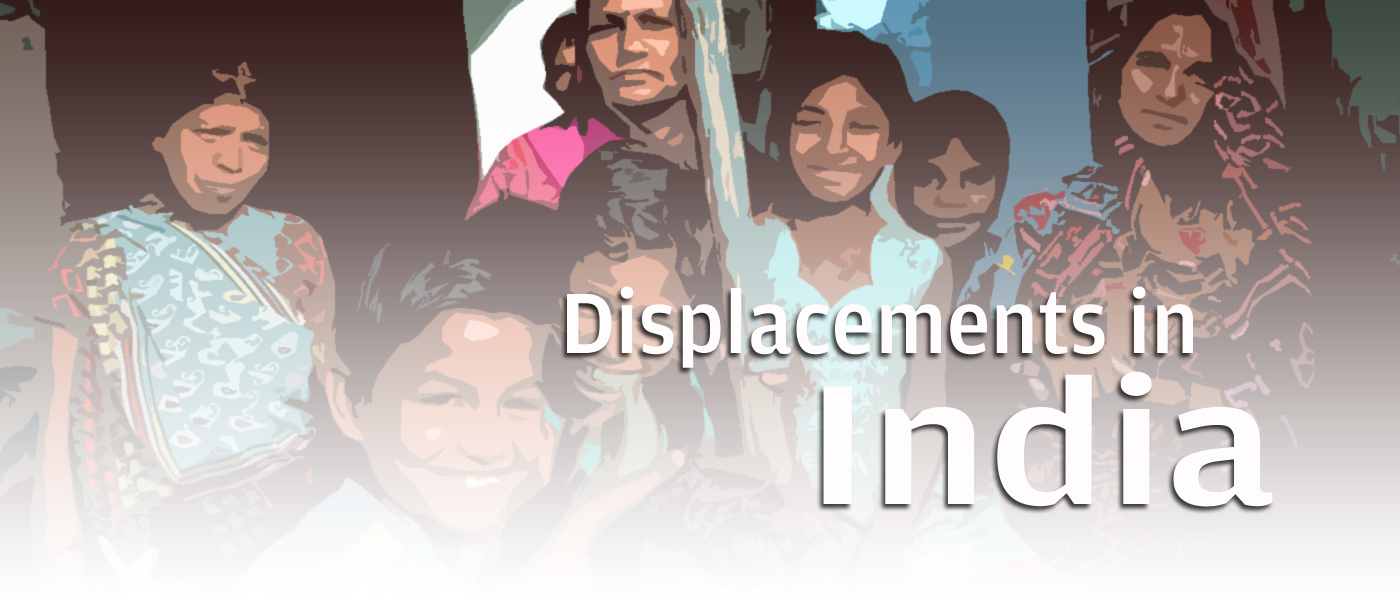
Sixty-seven per cent, or in India, about 2.4 million people were internally displaced due to disasters, mostly linked to monsoon season floods in Bihar that led to more than 1.6 million displacements between mid-July and October.
☛ Data source: Internal Displacement Monitoring Centre (IDMC)
Total displaced since (2008 - 2016) |
Displaced in 2016 |
| 3,56,18,003 | 24,00,307 |
✎ move mouse over the waves to know detail
☛ Data source: Internal Displacement Monitoring Centre (IDMC) and the Norwegian Refugee Council (NRC)

There were 6.9 million new internal displacements by conflict and violence in 2016. Sub-Saharan Africa overtook the Middle East as the region most affected, with almost one million new displacements in the Democratic Republic of Congo as a result of violent clashes in the provinces of North Kivu, South Kivu and Kasa.
☛ Data source: Internal Displacement Monitoring Centre (IDMC) and the Norwegian Refugee Council (NRC)
Significant levels of displacement continued in the Middle East, with Syria, Iraq and Yemen experiencing close to two million new displacements in total during 2016.
☛ Data source: Internal Displacement Monitoring Centre (IDMC) and the Norwegian Refugee Council (NRC)
 Did you know? By the end of 2016 there were 40.3 million people living in internal displacement as a result of conflict and violence in the world
Did you know? By the end of 2016 there were 40.3 million people living in internal displacement as a result of conflict and violence in the world
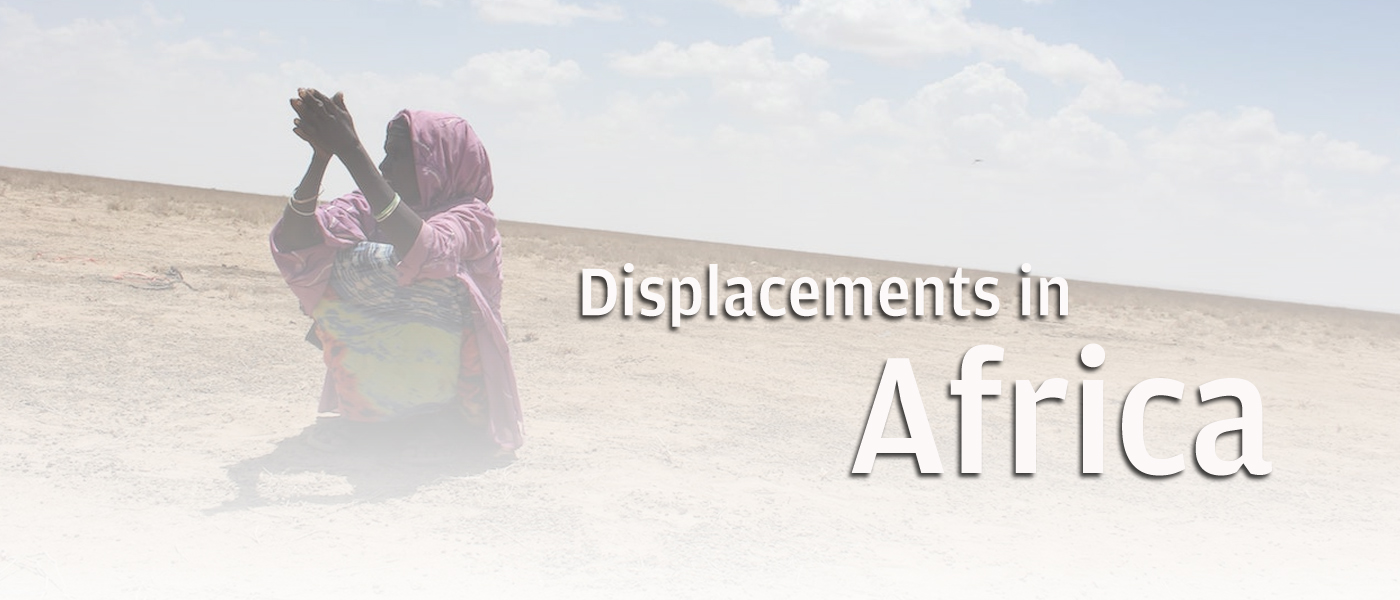
In the DRC, over 900,000 people were displaced by violence and conflict in 2016 alone—a 50 per cent rise compared to the previous year.
More than 1.8 million people were internally displaced in South Sudan as of December 2016, an increase of around 230,000 since November 2015.
Displaced by conflicts (in 2016) Displaced by disasters (in 2016)
☛ Data source: Internal Displacement Monitoring Centre (IDMC) and the Norwegian Refugee Council (NRC)
South Sudan’s refugee population was the largest in Africa in 2016, with more than 1.5 million people estimated to be living in neighbouring countries of Ethiopia, Kenya, Sudan and Uganda.
 Did you know? In 2016, the Democratic Republic of the Congo had 922,000 new displacements, the highest figure in the world, because of conflict and armed attacks, and yet the crisis received relatively little international attention
Did you know? In 2016, the Democratic Republic of the Congo had 922,000 new displacements, the highest figure in the world, because of conflict and armed attacks, and yet the crisis received relatively little international attention
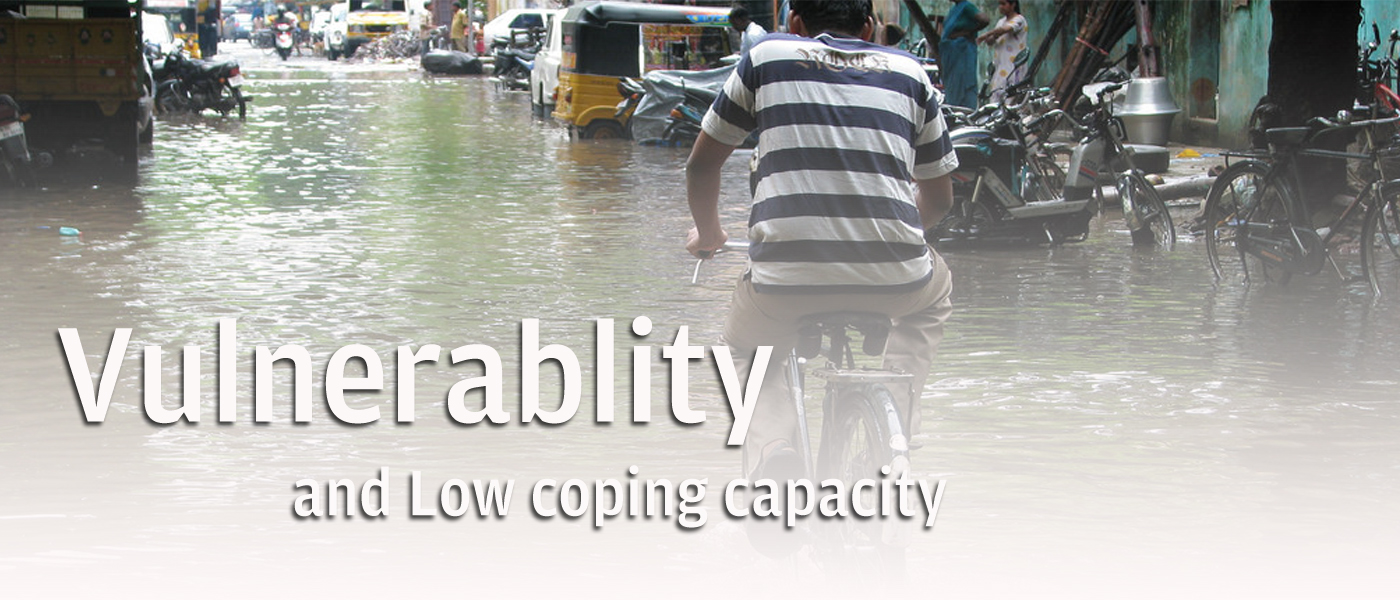
High-risk environments tend to have low coping capacity and high levels of economic vulnerability. Failure to address this vulnerability means that hazards like floods, droughts, storms, earthquakes and Tsunamis push up to 26 million people into poverty every year. As the wealth of the poorest is typically in the form of housing or other physical assets that are easily damaged or destroyed by disasters, such climate disasters can substantially increase the number of people displaced.


☛ Data source: INFORM risk index, 2017
☛ Data source: Internal Displacement Monitoring Centre (IDMC) and the Norwegian Refugee Council (NRC)
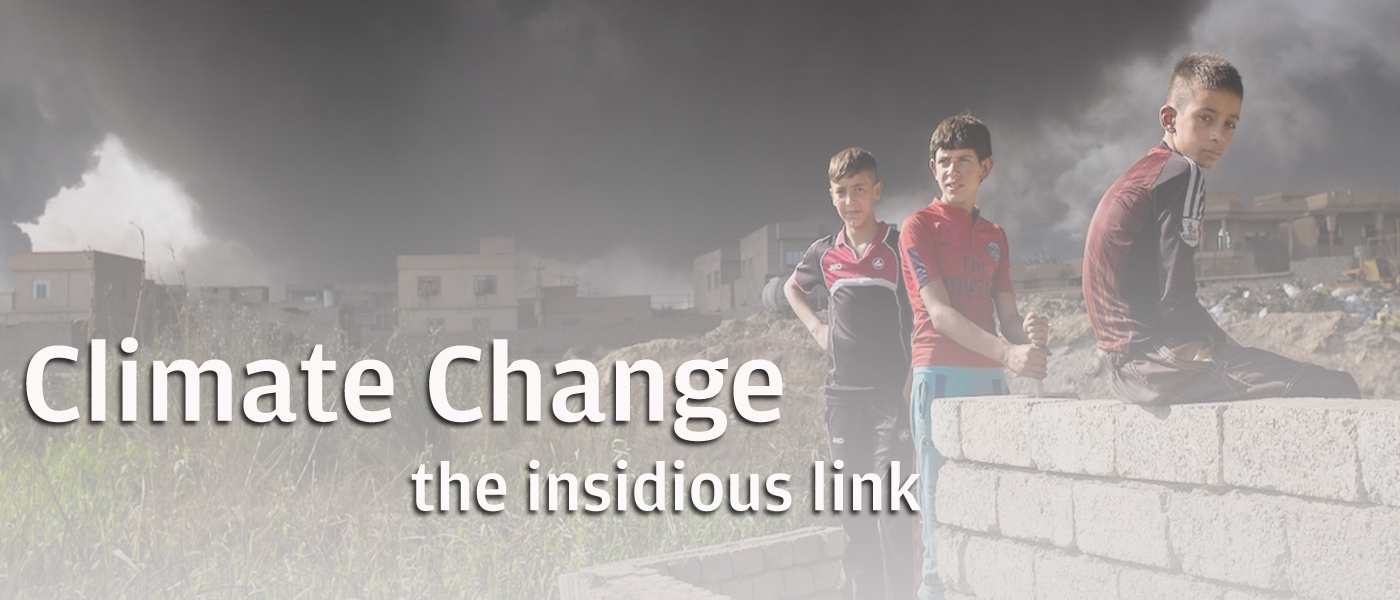
According to a new study, at 23 per cent of the armed conflicts and ensuing displacements were linked to climate disasters. Droughts in Syria and Somalia indicate that climate calamities may have already contributed to sustained conflicts. As climate disasters affect access to food and livelihoods the potential for conflict over scarce resources and displacements increases.
 Did you know? There could be 2 billion climate refugees by the end of the 21st century if climate change mitigation measures like the Paris agreement fail and fossil fuels are not replaced by low-carbon energy sources
Did you know? There could be 2 billion climate refugees by the end of the 21st century if climate change mitigation measures like the Paris agreement fail and fossil fuels are not replaced by low-carbon energy sources
☛ How to use map: Select a parameter and move mouse over particular country to know more
☛ Note: Vunerability and Lack of adaptation capacity in per cent
☛ Data Source: GLOBAL CLIMATE RISK INDEX 2017, German Watch and World Risk Report 2016 published by the United Nations University (UNU) Institute for Environment and Human Security (UNU-EHS) and Bundnis Entwicklung Hilft
Staring at a bleak future
Rather than the number of Internally Displaced People (IDP) halving by 2030, the fear is that displacement will continue increasing in the future, because there is insufficient attention to the underlying causes of crises.
Data source:
✿ Internal Displacement Monitoring Centre (IDMC)
✿ Norwegian Refugee Council (NRC)
✿ Global Climate Risk Index 2017, German Watch
✿ INFORM Risk Index, 2017
✿ World Risk Report 2016 published by the United Nations University (UNU) Institute for Environment and Human Security (UNU-EHS) and Bundnis Entwicklung Hilft
✿ World Bank


